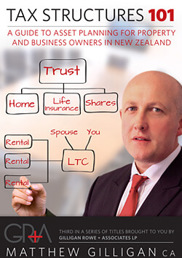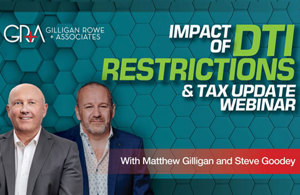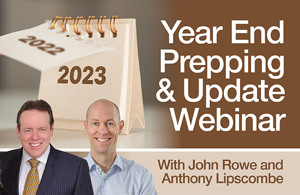What is a Look-Through Company (LTC)?
When it comes to look-through companies (LTCs) there are a lot of accountants who are confused by them and tell their clients to avoid using them. This is due to a lack of knowledge about the LTC rules and not investing in understanding what an LTC really means. At GRA we have invested a lot of time and money to understand LTCs. This wasn't so we can impress other accountants, but to make sure our current and future clients actually get the right advice about whether an LTC would be suitable for their particular structure. It's a bit like your doctor recommending the incorrect drug for an illness. You wouldn't put your health at risk so why put your wealth at risk.
Is an LTC right for you?
The Birth of the LTC
The look-through company regime came into existence on 1 April 2011. The origins of the LTC regime can be traced back to the government’s budget announcement of May 2010 where they announced an overhaul of the loss attributing qualifying company (LAQC) regime of the time. In particular, the government was concerned with some of the aspects of the LAQC regime including:
- Losses were able to be attributed to shareholders and claimed personally at personal tax rates, which could have been as high historically as 39%, but profits were able to be trapped in the company and taxed at the company tax rate which was either 33% or 30% at the time.
- There was no cap on the amount of losses able to be claimed by a shareholder of an LAQC.
- Shareholders of an LAQC were able to take advantage of tax losses that might be funded through debt, but then not suffer any corresponding remission income if the debt happened to be written off after the LAQC election was revoked.
- There were also concerns around the complexity and the rigid nature of the LAQC election rules.
Key Elements of the LTC Regime
- The company is transparent for tax purposes. This means that tax profits or losses that would ordinarily be returned by the company are in fact returned by the shareholders in proportion to their shareholding. From a technical perspective, the shareholder is regarded as having derived the income and incurred the expenditure of the LTC. However, on 1 April 2019 the loss ring-fencing rules for property investors came into force. Under these rules, losses from residential rental property cannot be offset against other forms of income, although they can potentially be offset against future rental profits within the same portfolio.
- Originally there were very complex loss limitation rules in place that sought to limit the amount of tax loss a shareholder of an LTC could claim to the extent of their investment in the LTC. The rules' complexity derived from the complicated formula that one had to apply in order to work out what a shareholder’s owner’s basis was. This is the description of the exposure that a shareholder had. Broadly speaking, the principle was to ensure that if the most a shareholder of an LTC could lose was $100, then the most they should be able to claim from a tax perspective is $100. In 2017, however, IRD relaxed these rules, and now they only affect LTCs that are in partnership with other LTCs.
- The movement of shares in an LTC is regarded as the movement of the underlying property. This means that if the LTC owns revenue account property there may be a taxable gain on movement of the shares. Further, if the LTC owns depreciable property, there may be depreciation recovery. That said, there are exemptions and de minimis thresholds.
- As an LTC is a disregarded entity for tax purposes, some of the rules that ordinarily apply to companies do not apply to LTCs. For example, shareholders cannot draw shareholder salaries that are exempt from PAYE. Furthermore, there are restrictive rules around when a PAYE salary can be claimed for tax purposes in an LTC.
- Aside from tax, an LTC is just an ordinary company. This means that from all other legal perspectives you have a company with limited liability and subject to the ordinary company legal framework.
Alternatives to LTCs for Property Investors
Due to the loss ring-fencing rules, LTCs may no longer be the best option for some property investors. Have a look at the video below, which outlines a couple of examples of alternative structures that could be used if you are a property investor in salaried employment.
Important: As always, seek professional advice from an expert tax planner before deciding on what structure is right for your specific circumstances.
Example structures: Employed Buy and Hold (Excerpt from Trusts & Tax webinar, October 2022)
Requirements of an LTC
In order for a company to obtain LTC status there are some base requirements. They are as follows:
- There have to be five or fewer shareholders. As with many elements of the LTC rules, this in itself is not straightforward, as there are aggregation rules that allow certain related shareholders to count as one shareholder.
- All shareholders of an LTC must be natural persons, trusts, or other LTCs.
- An LTC election needs to be filed within the appropriate timeframe. This varies depending on whether the company is new or existing.
- The company cannot be regarded as a foreign company. This means that the company not only has to be tax resident of New Zealand under domestic legislation but it also needs to retain that tax residency in New Zealand after the application of any relevant double tax agreement.
LTC Summary
In summary, the LTC rules are relatively complex but offer a useful tax structure for a wide range of potential uses including holding loss-making investments (other than residential property), carrying out joint venture business activities between two to five business partners, cross border investment where an ordinary company structure might give rise to two layers of taxation (i.e. once at company level and once at shareholder level) etc.
It's our passion and expertise that has helped thousands of Kiwis, expats and migrant property investors to minimise tax and increase their net worth. That's why when the proposed 2010 tax changes to the LAQC regime were announced to the property investment community, including professional CA firm's like ours, we made it our mission and duty to understand the legislation and all its implications.
For more information and to organise a review of your affairs with respect to look-through companies and LTC changes, please contact us.









































